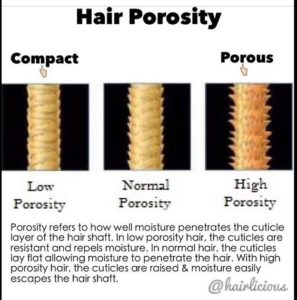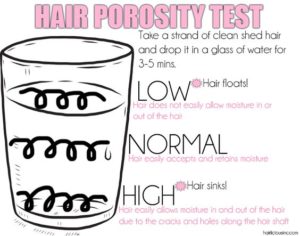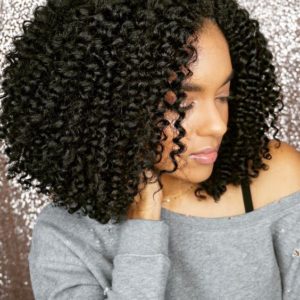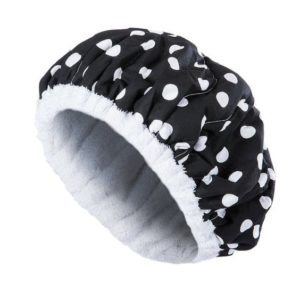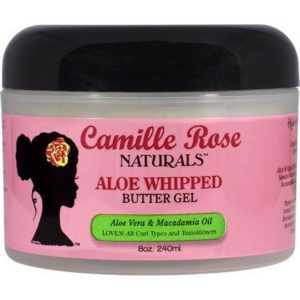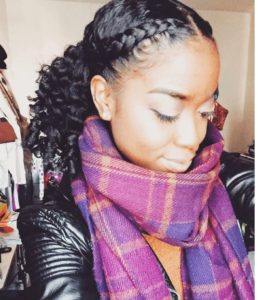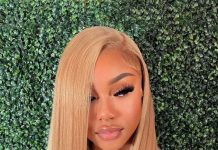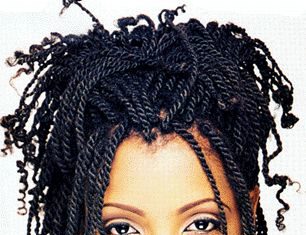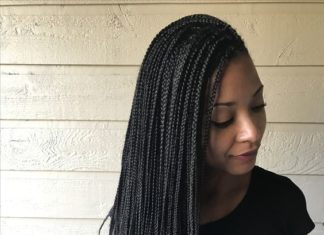Low Porosity Hair Care Guide
There are several characteristics that affect how your hair looks, feels, and responds to certain products. These factors can vary significantly from person to person, which can make creating a healthy hair routine tricky. Knowing your hair’s porosity is extremely useful when it comes to choosing which products to use and how to apply them to get the best results. If you have natural hair, it’s especially important to be aware of your hair’s porosity because natural hair is much more prone to dryness and knowing your porosity will help you figure out how to keep your hair moisturized. Keep reading to learn more about the best ways to moisturize and care for low porosity hair.
1What Is Low Porosity Hair?
Low porosity hair by definition is hair that is not very porous. If you have low porosity hair, then your hair cuticles are tightly bound. One of the main disadvantages of low porosity hair is that it can be more prone to dryness because it’s harder to get moisture inside. Luckily, this also means that low porosity hair tends to retain moisture better. The key is getting the moisture inside, which can be a little difficult, but not impossible. Fortunately, there are certain products and techniques available that make it easier to care for low porosity hair. You can’t tell whether or not you have low porosity hair by just looking at it (like you can with curl type or density), but there are definitely ways to figure out your hair’s porosity.
2Low Porosity Hair Characteristics
The easiest way to test your hair’s porosity is to perform the “float test.” This involves taking a clean, dry strand of hair (with no product) and dropping it into a glass or bowl of room temperature water. After a few minutes, if the hair is still floating at the top, that’s a sign that you have low porosity hair. Another way to test for low porosity hair is to run the fingertips of your thumb and middle finger up the length of a strand of your hair. If it feels smooth to the touch and you don’t feel any bumps along the way, that’s a sign that your cuticles are tightly bound. If you have low porosity hair, you’ll probably notice that it takes a while for your hair to become completely saturated with water when you wet it. Low porosity hair also takes a long time to dry and is often more resistant to chemical processes.
3High Porosity Hair
The float test can also tell you whether you have high porosity hair. If the strand of hair sinks to the bottom, that’s an indication that your hair is highly porous. This means that unlike low porosity hair, porous hair absorbs moisture very easily. Unfortunately, because the cuticles are raised, that also means that moisture escapes just as easily. Therefore, one of the biggest challenges associated with high porosity hair is retaining moisture. Those with high porosity hair can use some of the same products as those with low porosity hair, the key is how (and when) you apply them. If your hair sort of floats in the middle of the glass or bowl, that’s an indication that you have normal porosity hair, which means your hair easily accepts and retains moisture, so keeping your hair moisturized is usually not a big challenge.
4How To Care For Low Porosity Hair
Once you understand the nature of low porosity hair, it will be easier to take care of it. Because it doesn’t absorb moisture and products as easily, low porosity hair is a lot more prone to product build-up. Washing your hair regularly is necessary to get rid of the excess product sitting on top of your hair. Use a sulfate-free shampoo to avoid drying out your hair. If you have low porosity hair, you may also benefit from co-washing your hair in between regular shampooing to help give it a boost of moisture mid-week. Using heat with your deep conditioner will help open your hair cuticles and let the conditioner penetrate your strands. You can either cover your hair with a plastic cap and sit under a dryer or use a self-heating conditioning cap.
5Moisturizing Low Porosity Hair
The best time to moisturize your hair is typically after washing and conditioning. However, like so many things in life, timing is everything. It’s best to apply your moisturizer to damp hair rather than soaking wet hair. Think of your hair as a sponge: it can only absorb so much moisture before it gets “full.” So if you apply your moisturizer to soaking wet hair, chances are it’s mostly going to just sit on top and not really penetrate your strands. Applying your moisturizer when your hair is damp will give your hair a chance to better absorb and retain moisture. If you need to re-moisturize your hair midweek, use a lightweight, water-based moisturizer that will easily absorb into your strands. If you use a creamy moisturizer like a hair milk, lightly spritz your hair with water first to prevent the product from just sitting on top of your strands. Products that contain humectants are a great choice for low porosity hair. Humectants draw moisture from the air into your hair, which will help keep your hair hydrated.
6Low Porosity Hair Products
A moisturizing, sulfate-free shampoo is a must for low porosity hair, as it will help keep your hair clean and moisturized. Everyone’s hair is different of course, but TGIN’s Moisture Rich Sulfate Free Shampoo is a great option for low porosity hair. Kinky Curly’s Come Clean Shampoo is another great choice, especially if you want an even deeper cleanse. DevaCurl One Condition is a great option for low porosity hair because it can be used as either a rinse-out conditioner or a leave-in, and it provides moisture without the build-up. Some of the best conditioners for low porosity hair are ones that contain humectants, such as TGIN’s Honey Miracle Hair Mask. Camille Rose Naturals Aloe Whipped Butter Gel is a great moisturizer for low porosity hair; it also doubles as a styler, providing soft, flexible hold for styles like twist outs. The Alikay Naturals Shea Yogurt Hair Moisturizer is another great choice for low porosity hair. Apply it to damp hair for long-lasting moisture; it also doubles as a styler.
7LOC Method For Low Porosity Hair
There is a debate about whether or not the LOC method is appropriate for low porosity hair. Some people feel that the LOC method, which is typically used to improve moisture retention, is unnecessary because low porosity hair has less trouble retaining moisture. However, the LOC method can still be useful for those with low porosity hair. The key is using the right products for each step and applying each product sparingly to avoid product build-up. For the L step in the LOC method, you can simply use water, or a lightweight, water-based leave-in or moisturizer. For the O step, lightweight oils like jojoba oil, argan oil, or even olive oil are good choices for low porosity hair. For the C step, a curl defining cream or styler is generally the best bet. If you choose to use the LOC method, make sure you start on damp hair and only use a very small amount of each product. You may find that a modified version of the LOC method works better for your hair. Some people with low porosity hair skip the oil altogether and just follow the L step with a styling cream for extra moisture and curl definition. Trial and error is the best way to figure out the best method for your hair.
8Low Porosity Hair – Things To Avoid
If you have low porosity hair, product build-up is your worst enemy because it makes it even more difficult to get moisture inside your strands. This is why you should co-wash sparingly and stick primarily to sulfate-free shampoos to rid your hair of product build-up. Those with low porosity hair should also avoid heavy moisturizers, stylers, oils, and butters as they will likely build up on your hair; they also make it more difficult to moisturize your hair in between wash days. Although humectants are great for low porosity hair, they can actually produce unfavorable results in climates where the humidity is extremely high or extremely low, either drawing too much moisture into the hair or pulling moisture out of the hair; so be mindful of this when choosing your hair products and adjust your routine whenever necessary.
9Low Porosity Hair – Summary
Once you have a better understanding of how low porosity hair behaves, you’ll be able to create a hair care routine that works. Keep track of how your hair responds to different products and adjust your methods if necessary. Remember to apply your products to damp hair with a light hand and wash your hair often to prevent product build-up. Once you find the right products and methods, maintaining soft, moisturized, healthy low porosity hair is absolutely possible.


